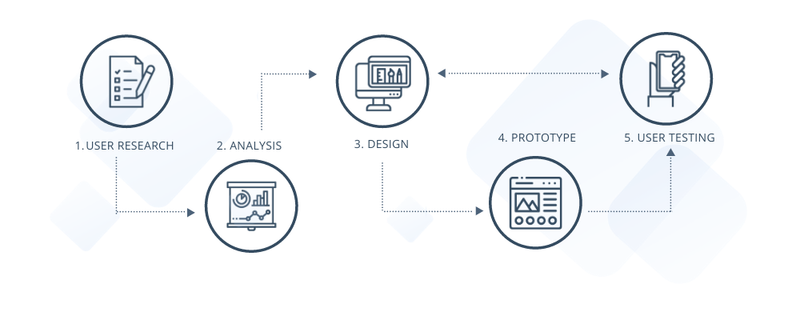Storytelling is changing and augmented reality (AR) is proving itself to be a prominent, permanent addition to our storytelling toolkit.
Because of that, we’re seeing huge growth in the amount of UX and UI designers evolving their skill sets to include immersive design.
Even for the most experienced UX designer, moving into AR design comes with a learning curve. Understanding how users interact with augmented reality as a storytelling medium is integral to creating successful experiences, but it’s hard to find existing, trustworthy research and knowledge in that field.
Based on our 10 years’ of experience building AR experiences, we’ve put together a list of six tips for engaging users and avoiding AR-specific pitfalls—plus advice on how to get started
1. Utilize your toolkits
The days of needing to be a coding wizard to create engaging AR experiences are in the past. There are more than a handful of toolkits on the market built for designers with ideas but without coding, prowess.
Toolkits like Zapworks are specifically designed to spare you the time of learning to code, allowing you to rapidly prototype, iterate, and test while you design.
Likewise, utilizing InVision boards or virtual whiteboards like Miro to map the user journey from start to finish is an effective way of ensuring consistency and immersion for the end-user. We use InVision boards early in the prototyping and concepting stage, bringing together key themes, user journey and additional branding elements to visualize the experience for the client.

2. Think about your user’s non-virtual reality
When thinking about the ways your user will interact with your AR experience, always take into account the context in which they’ll interact with your AR experience.
Address the most basic questions, like where users will be experiencing your content. One of the biggest charms of AR is that it is made to function as a part of our reality—so make sure you’re addressing what your users’ reality looks like.
We recommend taking the time to consider the circumstances in which one would interact with the given experience. Answer the questions:
- Will users have a stable Wi-Fi connection?
- How are they prompted to scan and engage with your AR experience?
- How much time do you expect them to spend in your experience?
- Does your scanning context enable that?

3. Provide a new perspective
One of the most fun and engaging aspects of AR is its ability to provide a new perspective on reality. When creating your experience, there is ample room for thinking about how an old perspective can be flipped or enhanced.
The more aware you are of the context in which your AR appears, the more empowered you are to take advantage of that context and offer a new look at the world. Remember, you’re no longer thinking about how graphical elements will look on a page or a screen: you have to think about how the content will sit within the real world.
The quickest way to learn how to design in AR and to start thinking about that extra dimension is to jump into the tools and start testing.
4. Engage your user
When it comes to on-screen UI, your user is always going to see the options you’ve presented them with; however, AR presents the unique challenge of variable distance in the digital space between the user (and their device) and the content they’re engaging with.
For example, including ‘look for prompts’ when deploying image-tracked AR experiences (digital content tracked to an image, most typically pieces of print or packaging) help flag to the user where they need to aim their device to ensure the target image is in the camera view.
Likewise, when designing world-tracked experiences (which allow the user to position digital content in the user's real-world environment), including digital ‘signposts’ within the UI of the experience helps users to understand how they can interact with the digitally overlaid content. For example, when building AR portal scenes, animated UI elements like arrow gestures can and should be used to guide a user to where they need to walk in the physical world to interact with the digital content.
As always, it’s important to preview, test and iterate your AR experiences as you go in different types of environments to ensure that your UI scales appropriately and works within the intended backdrop of the real world.

5. Make sure you have a clear call-to-action
Put simply, without a clear, compelling and directional call to action (placed directly on the piece of print or packaging you’re activating, or if you’re triggering AR content in-app then clear instructions and guidance should within the app itself), you simply won’t get people engaging with and enjoying your beautifully crafted AR content. There need to be noticeable instructions directly on the physical piece of print or packaging informing the user that it offers an extra layer—a digital layer—to the content they are already looking at.
Augmented reality is all about immersion, and your experience should reflect the level of thought you’ve put into the kind of interaction you want your users to have. What is going to leave an impression on them? What is going to have them walking away from their interaction with your AR feeling excited enough to share with their friends and colleagues?
By putting yourself in the shoes of the user and thinking deeply about how they interact with your creation, you’ll be able to provide a unique and special moment that makes your design unforgettable.

6. Think deeply about accessibility
Lastly, leave no stone unturned in how accessible you can make your program. It shouldn't be secondary thought, for example, to consider how those with color blindness would interact.
Worldwide, there are more colorblind people than there are people living in the US. This means that inclusive design is not just the right thing to do, but it's also a potential business opportunity. If we think about the context of the user as a key concern when designing an AR experience, then how is it affected by removing the color red? What does reality look like now? And how does the AR content work well with that reality?
Gaining empathy with users is key to designing inclusive AR solutions. Test your designs with diverse groups of users and focus on understanding their needs. Don’t assume any familiarity with AR; instead, make sure you are designing for anyone who could possibly interact with your experience and take the responsibility to educate users upon yourself.
Another feature to keep in mind when designing 360 environments, is to allow for content rotation. This means that people stuck to beds or wheelchairs will have the ability to look behind them without having to turn around.
These are examples of how to design inclusive features for AR. It's up to the designer to test with different people and different scenarios. The wider the user group the more chances of having inclusive outcomes.
Final thoughts
So there you have it, six simple yet effective ways to perfect your augmented reality experiences. If you get these six examples right, you should be well on your way to crafting engaging, memorable and impactful AR, that not only stretch the boundaries of design but deliver rewarding results too.
 Grace Vassallo
Grace VassalloSenior Brand & Marketing Manager, Zappar
